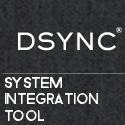You might be familiar with Linux load averages already. Load averages are the three numbers shown with the uptime and top commands – they look like this:
Most people have an inkling of what the load averages mean: the three numbers represent averages over progressively longer periods of time (one, five, and fifteen minute averages), and that lower numbers are better. Higher numbers represent a problem or an overloaded machine. But, what’s the the threshold? What constitutes “good” and “bad” load average values? When should you be concerned over a load average value, and when should you scramble to fix it ASAP?
First, a little back
ground on what the load average values mean. We’ll start out with the simplest case: a machine with one single-core processor.
The traffic analogy
A single-core CPU is like a single lane of traffic. Imagine you are a bridge operator … sometimes your bridge is so busy there are cars lined up to cross. You want to let folks know how traffic is moving on your bridge. A decent metric would be how many cars are waiting at a particular time. If no cars are waiting, incoming drivers know they can drive across right away. If cars are backed up, drivers know they’re in for delays.
So, Bridge Operator, what numbering system are you going to use? How about:
- 0.00 means there’s no traffic on the bridge at all. In fact, between 0.00 and 1.00 means there’s no backup, and an arriving car will just go right on.
- 1.00 means the bridge is exactly at capacity. All is still good, but if traffic gets a little heavier, things are going to slow down.
- over 1.00 means there’s backup. How much? Well, 2.00 means that there are two lanes worth of cars total — one lane’s worth on the bridge, and one lane’s worth waiting. 3.00 means there are three lane’s worth total — one lane’s worth on the bridge, and two lanes’ worth waiting. Etc.
 = load of 1.00
= load of 1.00
 = load of 0.50
= load of 0.50
 = load of 1.70
= load of 1.70
This is basically what CPU load is. “Cars” are processes using a slice of CPU time (“crossing the bridge”) or queued up to use the CPU. Unix refers to this as the run-queue length: the sum of the number of processes that are currently running plus the number that are waiting (queued) to run.
Like the bridge operator, you’d like your cars/processes to never be waiting. So, your CPU load should ideally stay below 1.00. Also like the bridge operator, you are still ok if you get some temporary spikes above 1.00 … but when you’re consistently above 1.00, you need to worry.


Very short, clear, to the point and most importantly very helpful.
I did not know “1.00” was the cpu maximum – I knew higher was not good – but now I know that the cpu cannot keep up. And that is more helpful for an informed long run solution.
Thanks – because I believe a lot of us are not clear on this.
Let’s see…
http://blog.scoutapp.com/articles/2009/07/31/understanding-load-averages
That’s the original article, there is the same link in “complete story”.
Ah, I didn’t notice the ‘complete story’ link, sorry. Anyway.. Imho you should really notice the multicore magic. Because load 1 definitely doesn’t mean your CPU is running at 100% at most people’s computers as most people use multicore architecture.